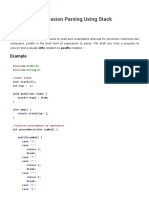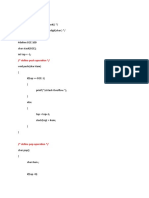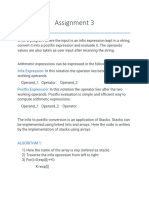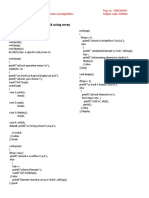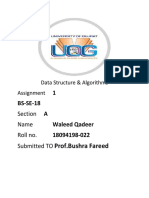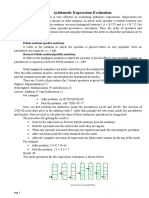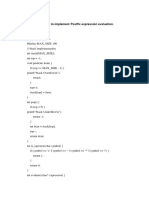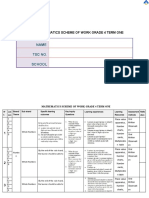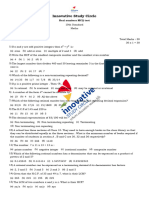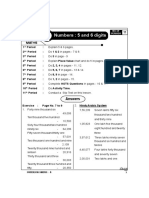0% found this document useful (0 votes)
74 views13 pagesExpression Tree: Winter Semester 2018 Course: Data Structures
The document discusses different notations for writing arithmetic expressions - infix, prefix, and postfix notations. It explains that infix notation is easiest for humans but hardest for computers, while prefix and postfix notations are more suitable for algorithms. The key differences between the notations are described along with examples. Parsing expressions, operator precedence, and a postfix evaluation algorithm are also covered.
Uploaded by
Sabeel ButtCopyright
© © All Rights Reserved
We take content rights seriously. If you suspect this is your content, claim it here.
Available Formats
Download as DOCX, PDF, TXT or read online on Scribd
0% found this document useful (0 votes)
74 views13 pagesExpression Tree: Winter Semester 2018 Course: Data Structures
The document discusses different notations for writing arithmetic expressions - infix, prefix, and postfix notations. It explains that infix notation is easiest for humans but hardest for computers, while prefix and postfix notations are more suitable for algorithms. The key differences between the notations are described along with examples. Parsing expressions, operator precedence, and a postfix evaluation algorithm are also covered.
Uploaded by
Sabeel ButtCopyright
© © All Rights Reserved
We take content rights seriously. If you suspect this is your content, claim it here.
Available Formats
Download as DOCX, PDF, TXT or read online on Scribd
/ 13
